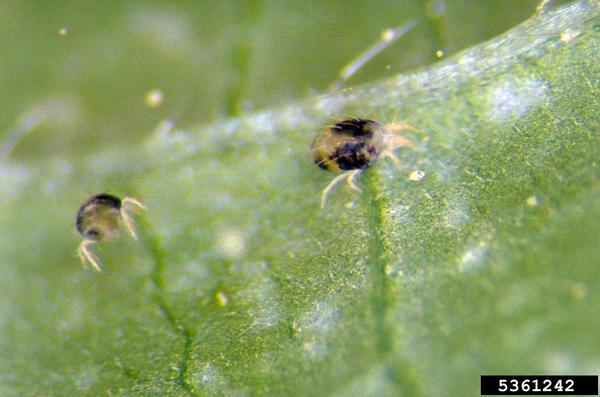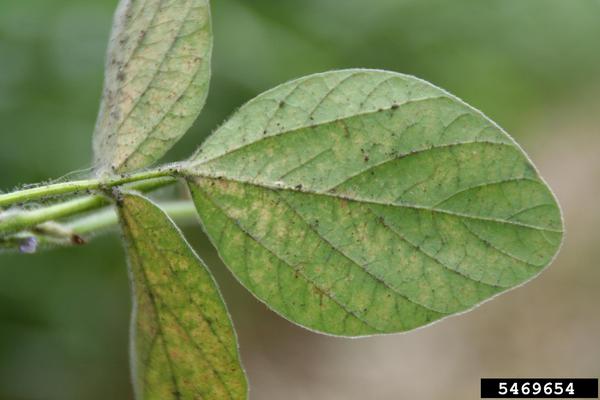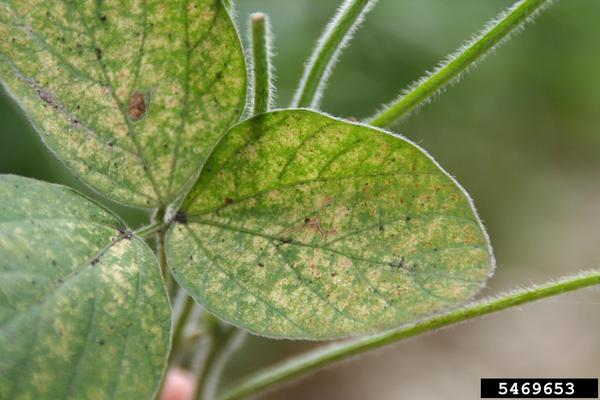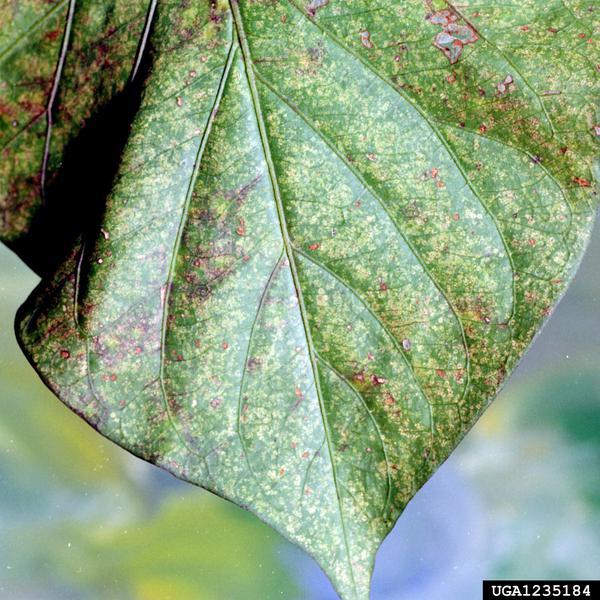Spider Mites, Tetranychidae
Multiple species, but Tetranychus urticae Koch likely predominates.
Feeding Injury and Damage
Spider mites pierce individual cells of the plant and consume the inner contents. This cell will die, as will cells surrounding this one. As a result, spider mite damage is often first visible as specks of white, yellow, or brown stipples on the leaves. Damage on an individual leaf proceeds with the leaf tuning yellow to light brown, then dark with bronzing, and, in the most severe case, the leaf will drop. Spider mite feeding can reduce plant weight, height, pod set and yield, but this depends on the timing and severity of infestation. Soybean plants are most susceptible from R3 to R5, when the warm summer conditions combine with pod filling.
Spider mites are more of a problem when conditions are hot and dry. Furthermore, some insecticides can flare spider mites by removing beneficial insects from the field. Finally, some insecticides can actually cause spider mites to have more offspring than they normally would (hormolygosis). Remember that spider mites are not insects!
Economic Threshold
The threshold is based on plant damage, as well as the presence of live mites. Note that a fungus (Neozygites floridiana) can sometimes wipe out populations. So don’t treat if a good portion of infected mites are present.
Threshold Scale (0-5)
0. No spider mites or injury observed.
1. Minor stipling on lower leaves, no premature yellowing observed.
2. Stipling common on lower leaves, small areas or scattered plants with yellowing.
3. Heavy stipling on lower leaves with some stipling progressing into middle canopy. Mites present in middle canopy with scattered colonies in upper canopy. Lower leaf yellowing common and some lower leaf loss. (Spray Threshold)
4. Lower leaf yellowing readily apparent. Leaf drop common. Stipling, webbing and mites common in middle canopy. Mites and minor stipling present in upper canopy. (Economic Loss)
5. Lower leaf loss common, yellowing or browning moving up plant into middle canopy, stipling and distortion of upper leaves common. Mites present in high levels in middle and lower canopy.
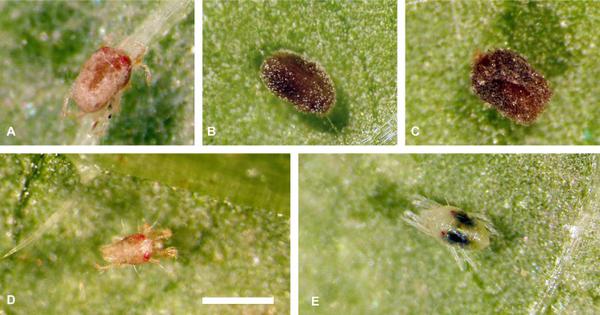
Images of spider mites killed by Neozygites floridana. Images A through C are dead infected mites, while image D is a healthy mite.
Fatal attraction: Male spider mites prefer females killed by the mite-pathogenic fungus Neozygites floridana Author: Nina Trandem, Upendra Raj Bhattarai,Karin Westrum,Geir Kjølberg Knudsen, Ingeborg Klingen Publication: Journal of Invertebrate Pathology CC BY-NC-ND 4.0
Insecticide Management
Recommended insecticides can be found in the North Carolina Agricultural Chemicals Manual. Always consult a label before application. General principles of IPM should be following, which include using multiple management tactics and the judicious use of insecticides.
Publication date: May 8, 2020
N.C. Cooperative Extension prohibits discrimination and harassment regardless of age, color, disability, family and marital status, gender identity, national origin, political beliefs, race, religion, sex (including pregnancy), sexual orientation and veteran status.

